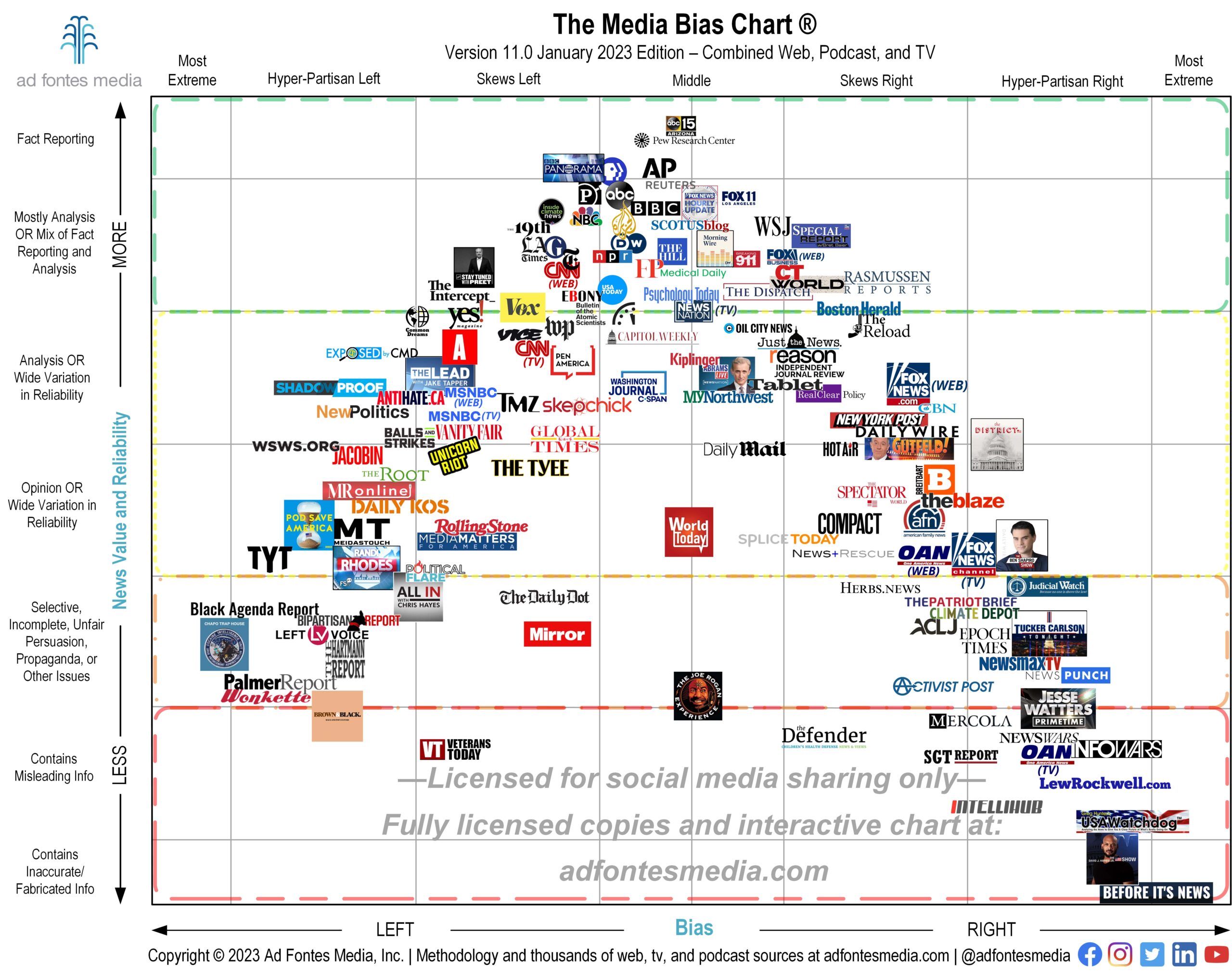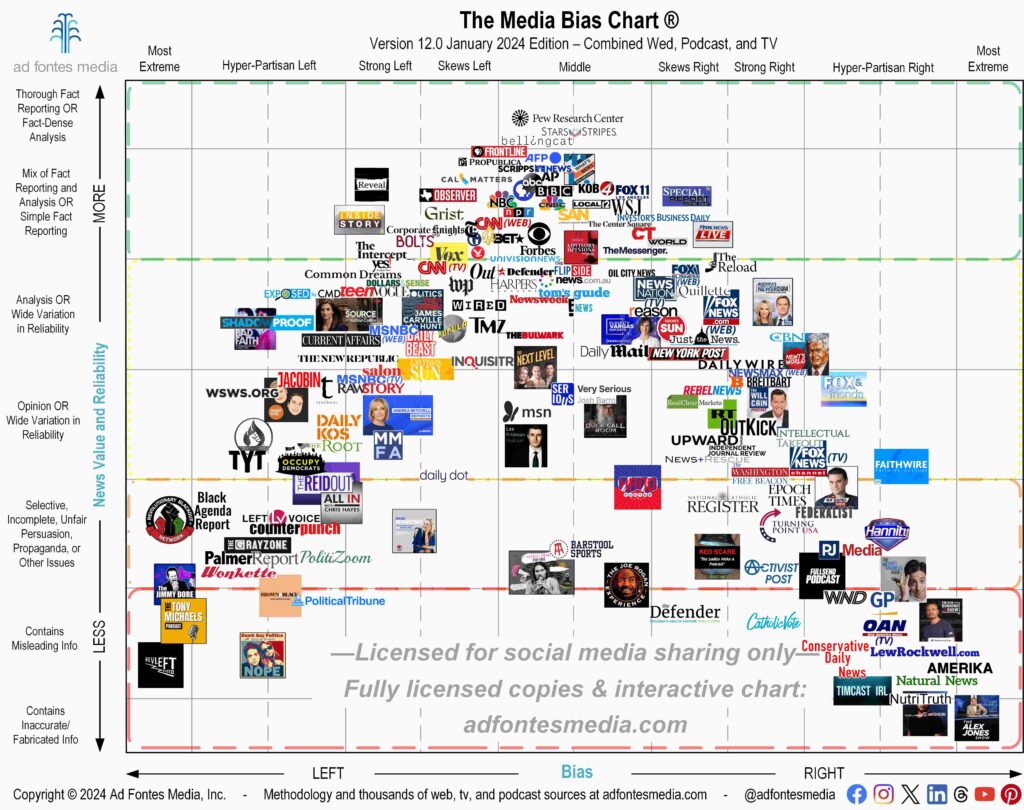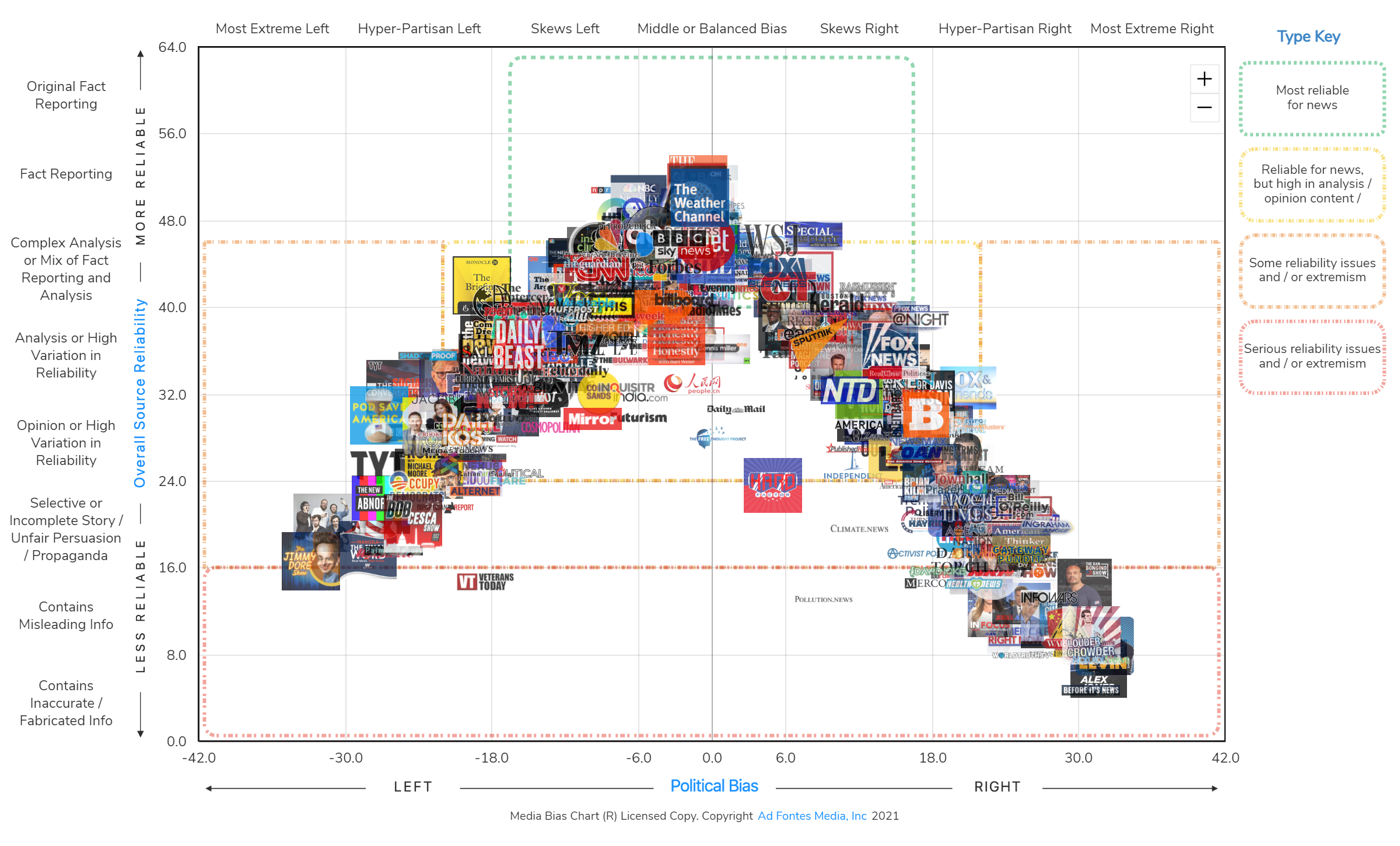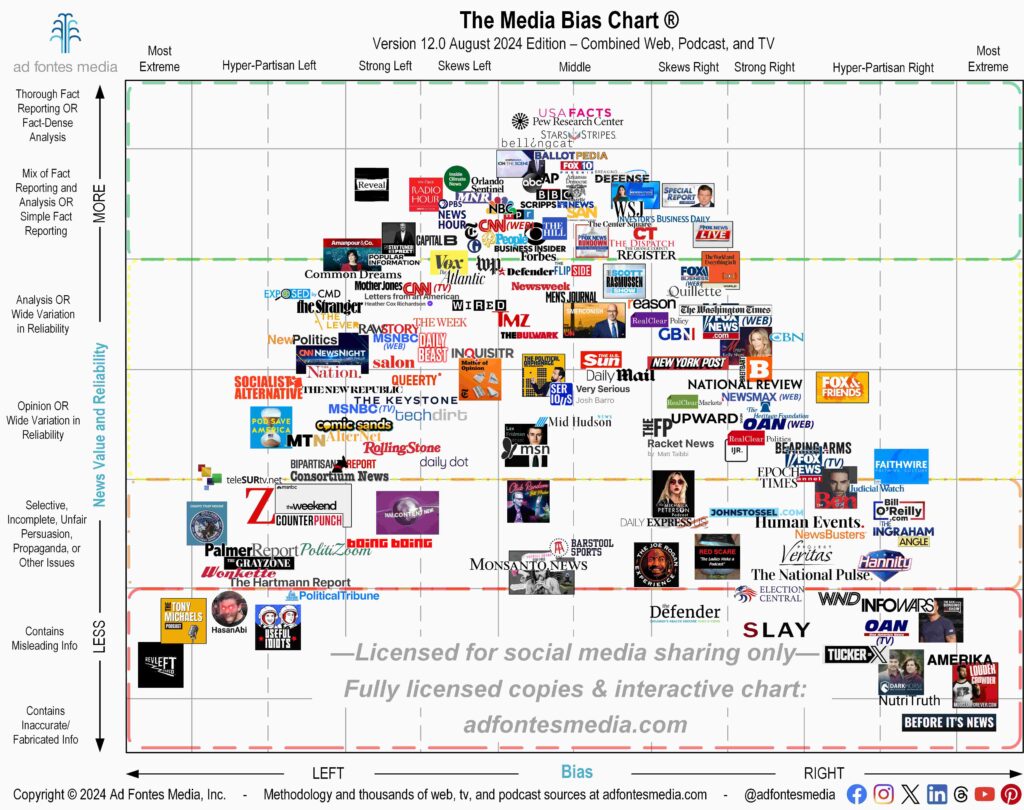Table of Contents
- Jack Smith Asks for Gag Order on Trump in Classified Documents Case ...
- Infographic Media Bias
- Media Bias Chart Gallery - Public | Ad Fontes Media
- Evaluating News Sources - WRT 101/102 - M. Young - Research Guides at ...
- Infographic Media Bias
- Infographic Media Bias
- This is an updated 2023 media bias chart. It shows the political bias ...
- Media Bias Chart | Tappan Zee Library Media Center
- The Media Bias Chart 7.0 (January 2021) : coolguides
- Infographic Media Bias



What is Media Bias?



Elon University's Media Bias Chart




How to Use the Media Bias Chart
The Media Bias Chart is a valuable tool for anyone looking to navigate the complex world of news. Here are some tips for using the chart: Verify sources: Before sharing or citing a news article, check the source's bias and reliability rating on the chart. Seek out diverse perspectives: Expose yourself to a range of sources with different biases to get a more nuanced understanding of the news. Evaluate language and tone: Be aware of loaded language, emotional appeals, and sensationalism, which can indicate bias or unreliability. Fact-check information: Use independent fact-checking organizations to verify the accuracy of claims and information. In a world where misinformation and bias are rampant, it's more important than ever to be critical consumers of news. Elon University's Media Bias Chart is a valuable resource for anyone looking to navigate the complex landscape of news sources. By understanding media bias and evaluating sources based on their reliability, we can make more informed decisions and engage in more nuanced discussions about the issues that matter. Whether you're a student, researcher, or simply a curious citizen, the Media Bias Chart is an essential tool for anyone looking to stay informed and engaged in today's fast-paced news environment.References: Media Bias Chart - Newspapers & News - LibGuides at Elon University